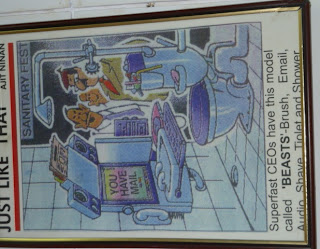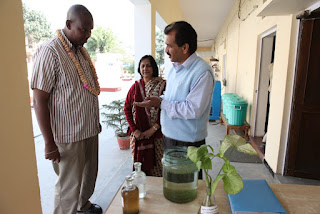Saturday, February 25, 2012
My visit to the Sulabh International Social Service Organisation Headquarters in Delhi
 |
| Each morning, staff of the Sulabh Foundation gather for morning prayers. This particular morning, they had a special guest, ME! |
 |
| A group photo of members of Sulabh, students and staff of a Delhi College and of course MOI in the back |
 |
| Sulabh Senoir Vice President Abha Bahadur explains the Foundation's twin pit technology to MOI |
 |
| Sulabh Foundation has designed numerous models of the twin pit toilet to fit different sizes of the wallet |
 |
| Buried under these beautiful flowers is a tank that is connected to the public toilet (not in the picture) and from it bio gas is generated after the gas passes through a number of processes |
 |
| This is the model of the bio gas technology that was designed by the Sulabh Foundation |
 |
| The bio gas is also ideal in heating during cold seasons |
 |
| Using a combination of batteries and bio gas, the world would live in less darkness |
 |
| Being in the computer age, pupils of the public school are taught early how to use these gadgets and also the English language in order to know how to operate them |
 |
| For the achievements that he has managed to pull over the years, this action should be reversed but I humbly bowed down and received it |
 |
| Ooh I am almost blushing at this point, sweating buckets and my knees are knocking together like someone is tickling me with feathers on the soles of my feet |
Subscribe to:
Posts (Atom)














































